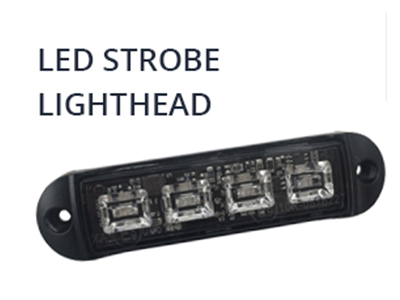Beacons VS lightbars
Beacons and lightbars are both types of warning lights used on vehicles for various purposes, but they differ in design, appearance, and functionality. Here’s a comparison between beacons and lightbars:
Beacons:
Design: Beacons are typically single, rotating or strobing lights mounted on a base or bracket. They have a compact and distinctive design.
Appearance: Beacons emit a single, bright, and often concentrated beam of light that rotates or strobes. They are easily recognizable by their spinning or flashing light.
Functionality: Beacons are primarily used as warning lights to signal the presence of a vehicle. They are often associated with construction, utility, and service vehicles.
Visibility: Beacons provide excellent long-distance visibility due to their focused and high-intensity light beam. They are effective in alerting others to potential hazards or the presence of a vehicle.
Mounting: Beacons are typically mounted on the roof or other high points of vehicles to maximize their visibility.
Colors: They are available in various colors, including amber, red, blue, and green, with amber being the most common for warning purposes.
Lightbars:
Design: Lightbars are elongated lighting systems with multiple LED modules or strobes arranged in a linear or curved configuration. They have a larger and more extensive design compared to beacons.
Appearance: Lightbars emit light from multiple sources across their surface. They can display various colors and flash patterns simultaneously, providing versatility in signaling.
Functionality: Lightbars serve multiple functions, including emergency response, law enforcement, traffic management, and more. They are highly adaptable to various situations.
Visibility: Lightbars offer excellent visibility both up close and at a distance due to their array of lights and customization options. They are designed to grab attention effectively.
Mounting: Lightbars are typically mounted on the roof or other parts of vehicles, such as the grille, bumper, or rear deck. Their placement can be tailored to specific needs.
Colors: Lightbars offer customizable color configurations, allowing users to choose from multiple colors and flash patterns. They can display red, blue, white, amber, and more, often in combination.

What is the difference between a strobe and a beacon?
Key Differences:
Strobe lights produce rapid, intense flashes of light in a repetitive manner, while beacons emit a rotating or flashing beam of light in a more distinct and easily identifiable pattern.
Strobe lights are often used for general warning and attention-grabbing purposes, while beacons are frequently employed to signal the presence of a vehicle or hazard.
Beacons are typically larger and more prominent in design compared to strobe lights.
Strobe lights can offer multi-color options, while beacons are often monochromatic, commonly using amber or orange.

Why do people put light bars on trucks?
People put light bars on trucks for various practical and recreational reasons. Here are some of the common motivations for adding light bars to trucks:
Improved Visibility: Light bars significantly enhance visibility during nighttime driving or in low-light conditions. They provide a broader and brighter illumination that helps drivers see the road, obstacles, and potential hazards more clearly.
Off-Roading: Off-road enthusiasts often install light bars to their trucks for nighttime off-roading adventures. The powerful illumination helps navigate rough terrain and trails, making it safer and more enjoyable.
Work and Utility: Trucks used for work purposes, such as construction, agriculture, towing, and utility services, benefit from light bars. They provide extra visibility for tasks that extend into the night or in poorly lit work areas.
Emergency and First Responder Vehicles: Many emergency response and first responder vehicles, such as fire trucks, ambulances, and search-and-rescue vehicles, are equipped with light bars for quick and effective emergency response.
Safety: Light bars enhance safety by making trucks more visible to other drivers, reducing the risk of accidents. This is particularly important for large trucks, such as pickups, semitrucks, and service vehicles.
Aesthetic Enhancement: Some truck owners install light bars for aesthetic reasons. Light bars can give a truck a rugged and distinctive appearance, contributing to its overall style.
Hunting and Outdoor Activities: Outdoor enthusiasts, including hunters, often use trucks for transportation to remote areas. Light bars assist in navigating dark forests, fields, and trails during hunting and outdoor activities.
Emergency and Recovery: Trucks equipped with recovery and towing equipment use light bars to signal their presence and provide adequate lighting when assisting stranded or disabled vehicles.
Traffic Control: Trucks used for traffic control, roadwork, or escort services use light bars to manage traffic and signal directions effectively.
Customization: Many truck owners enjoy customizing their vehicles to suit their preferences and needs. Adding a light bar is one way to personalize a truck and make it unique.
Versatility: Light bars come in various configurations, including spotlights, floodlights, and combination lights. This versatility allows truck owners to choose the type of illumination that best suits their intended use.
Durability: Quality light bars are designed to withstand harsh conditions, including weather, vibrations, and impacts, making them a durable addition to trucks.
In summary, light bars on trucks serve practical purposes such as enhancing visibility, safety, and functionality. They are also used for recreational activities and customization to give trucks a distinctive look. The choice to install a light bar depends on individual needs, preferences, and the intended use of the truck.









